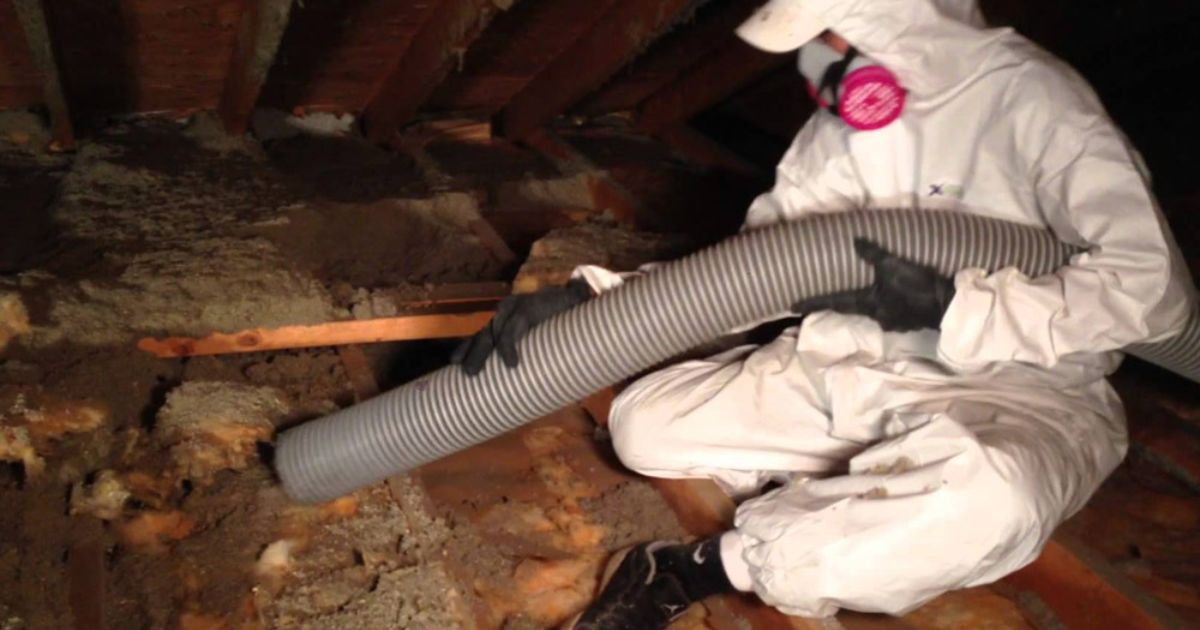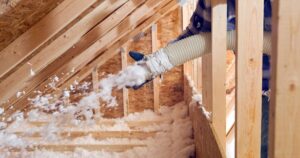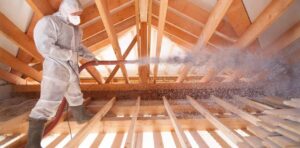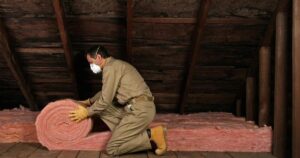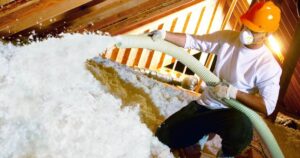Blown-in attic insulation is a type of insulation material used to improve the energy efficiency of a building, particularly in the attic or roof space. It is typically made from materials such as fiberglass, cellulose, or foam. Instead of being in the form of pre-cut batts or rolls, blown-in insulation is installed by using a blowing machine to disperse loose insulation particles evenly throughout the attic space.
This article will guide you through the process of how to remove blown-in attic insulation efficiently and effectively. The purpose of blown-in attic insulation is to create a thermal barrier that helps regulate the temperature inside a building.
When it comes to maintaining your home’s energy efficiency and comfort, the insulation in your attic plays a pivotal role. Blown-in insulation, known for its excellent thermal properties, is a popular choice for many homeowners. However, there may come a time when you need to remove or replace it.
Why Remove Blown-in Attic Insulation?
Before diving into the removal process, it’s essential to understand why you might need to remove blown-in insulation from your attic. There are several common reasons:
Upgrading Insulation
Over time, insulation materials can deteriorate, leading to a decrease in their insulating capabilities. To maintain or enhance your home’s energy efficiency, you might decide to replace the old insulation with new, more efficient materials.
Pest Infestations
Attics are prime targets for pests like rodents and insects. Blown-in insulation can be a cozy home for these unwanted guests, making insulation removal necessary to eliminate the infestation.
Mold and Mildew
If your attic has experienced moisture issues, it can lead to the growth of mold and mildew within the insulation. Removing the affected insulation is crucial for your family’s health and the integrity of your home.
Renovation or Repairs
When renovating or making repairs to your home, insulation removal may be required to access other areas of your home, such as the roof or walls.
Steps for Removing Blown-in Attic Insulation
Now that you understand why you might need to remove your blown-in insulation let’s delve into the steps for doing it effectively:
Safety First
Before starting any insulation removal project, ensure your safety by wearing appropriate protective gear, including a mask, gloves, and goggles. Attics can be dusty and may contain contaminants, so safety is paramount.
Turn Off Utilities
Before entering the attic, turn off any utilities connected to it, such as electricity and gas. This minimizes the risk of accidents during the insulation removal process.
Identify the Type of Insulation
Blown-in insulation can be made of various materials, including fiberglass, cellulose, or foam. Identifying the type of insulation will help you plan the removal process and disposal method accordingly.
Create a Removal Plan
Plan your removal method based on the type of insulation. For fiberglass insulation, use a vacuum with a HEPA filter. For cellulose or foam, consult the manufacturer’s guidelines or consider professional removal services.
Remove Contaminated or Damaged Areas
In cases of pest infestations or mold growth, remove the contaminated or damaged insulation carefully. Seal it in plastic bags and dispose of it properly.
Vacuum the Area
For non-contaminated areas, use a high-efficiency vacuum to remove the blown-in insulation. Ensure that you remove all loose material and achieve a clean attic space.
Repair Any Damage
Inspect the attic for any damage caused during the removal process. Repair any leaks, gaps, or structural issues before adding new insulation.
Install New Insulation
If you removed the insulation for renovation or upgrading, install new insulation according to the latest energy-efficient standards.
Dispose of Insulation Properly
Dispose of the removed insulation following local regulations and guidelines. Some materials may be recyclable, so check with your local recycling center.
Conduct Regular Maintenance
To prevent future issues, schedule regular attic inspections and maintenance to ensure your insulation remains in optimal condition.
FAQ’s
Can you remove the blown-in insulation yourself?
In some cases, you can remove the blown-in cellulose insulation yourself.
Do I need to remove old blown-in insulation?
Do I Have To Remove Old Insulation? Unless your insulation is wet, moldy or infested with pests, you don’t need to remove it before adding insulation on top of it.
Conclusion
Removing blown-in attic insulation is a task that requires careful planning and execution. Whether you’re upgrading your insulation, dealing with pests, or addressing moisture-related issues, following these steps will help you accomplish the task efficiently and effectively.
Remember to prioritize safety and consult with professionals if you’re unsure about any aspect of the removal process. With proper removal and replacement, your home can maintain its energy efficiency and comfort for years to come.

